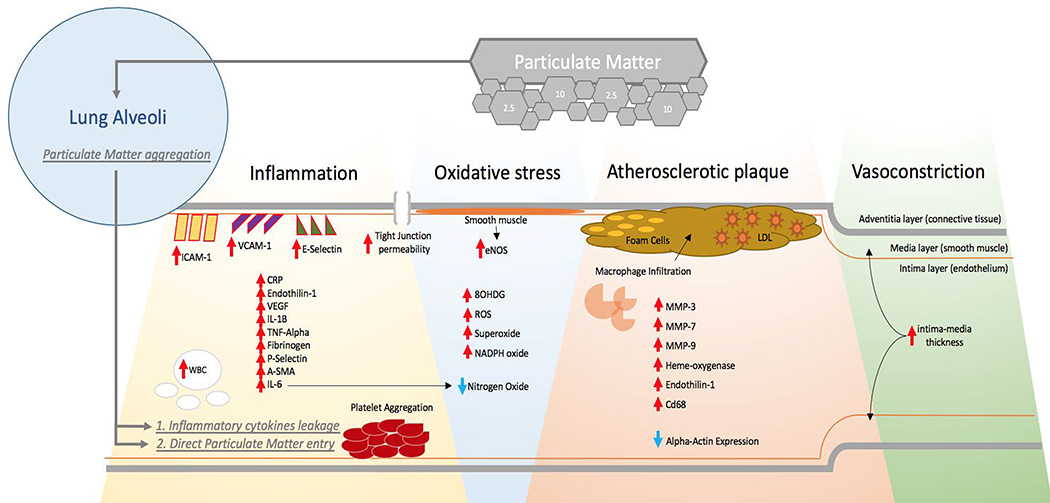Figure 1.
Schematic of the Particulate Matter effects on Vasculature
Particulate matter (PM) effects the vasculature either via direct entry into the bloodstream or by inciting an inflammatory response in the lung alveoli that results in secondary cytokine leakage into the systemic circulation. PM exposure is associated with increased platelet aggregation, and elevated levels of WBCs, CRP, Endothilin-1, VEGF, IL-1B, TNF-alpha, Fibrinogen, P-Selectin, A-SMA, and IL-6 in the peripheral blood. PM activates endothelial adhesion molecules including ICAM-1, VCAM-1, and E-Selectin. Exposure decreases eNOS production in smooth muscles and generates oxidative stress through 8OHDG, ROS, superoxide, and NADPH Oxide production. At the endothelial cell level, PM alters tight junction permeability and causes BBB leakage. PM exposure promotes macrophage infiltration, foam cell formation, and elevations in LDL, MMP-3, MMP-7, MMP-9, Heme-oxygenase, Endothelin-1, and CD68. Changes in endothelial function secondary to PM exposure cause vasoconstriction, increases in intima-media thickness and impaired vascular tone.

